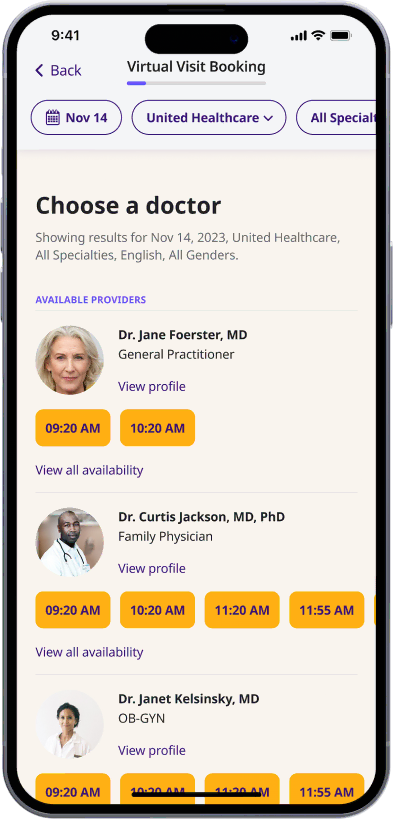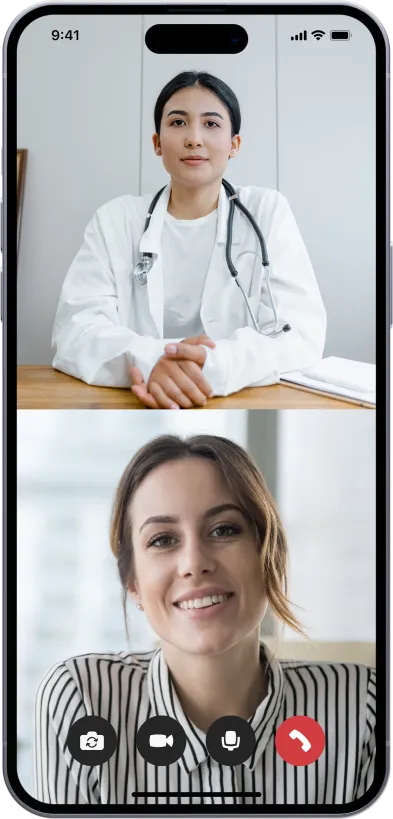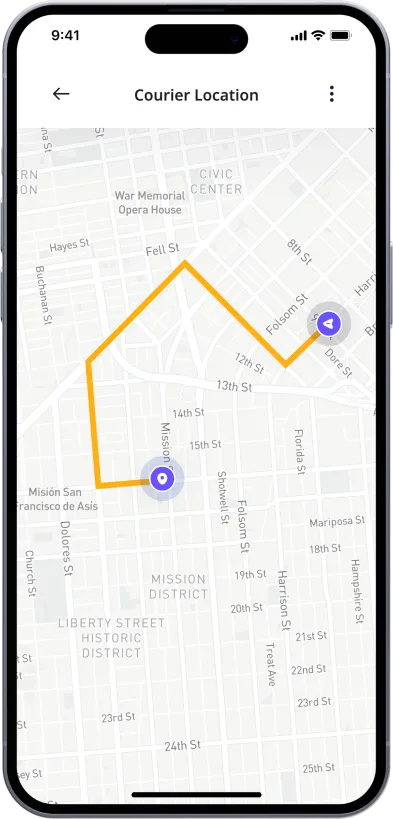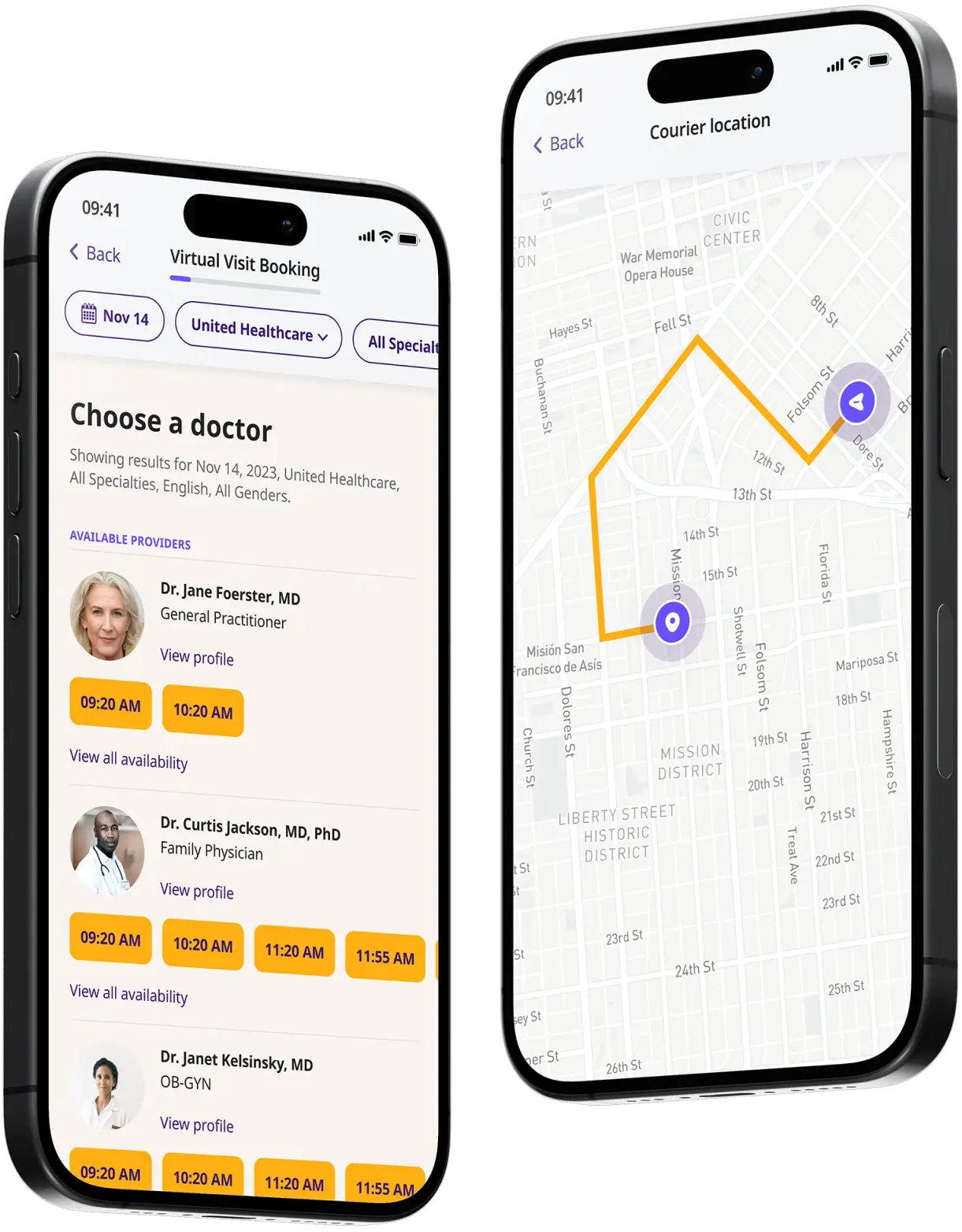Virtual Urgent Care Available 24/7
Access virtual urgent care anytime with DrHouse—fast, reliable care whenever you need it, 24/7.
WE CAN HELP YOU WITH
Available in 50 states. Insurance accepted
Fast
virtual visits
24/7 care
assistants
Prescriptions
as needed



See If Delivery Is Available Near You
Delivery Not Available
Enter your ZIP code to check if prescription delivery is available in your area and how soon your meds could arrive.
How to get started
Choose your doctor, start a virtual visit, and have your prescriptions sent to your preferred pharmacy for pickup — all in just a few easy steps.
Choose a doctor
Choose a physician by availability, specialty, ratings, and more.

Start a video call
Get connected with a doctor anytime, anywhere.

1-Hour Rx Delivery
Your prescription delivered to your door in 1 hour or less.

Available in 50 states. Insurance accepted.
One-Time
Physician Visit
One-time visit with a physician for diagnosis, treatment, Rx, labs, referrals, and doctor’s notes.
Accepted Insurances
See why people turn to DrHouse...
Healthcare on time!
Consult with a board-certified healthcare professional in 15 minutes or less.
Download our app

About Virtual Urgent Care
To better understand what virtual urgent care is, it is best to compare it with in-person urgent care clinics. Urgent care clinics provide high-quality healthcare services to people who are unable to get access to their primary care physician’s office but need immediate attention to a problem that isn’t life-threatening.
Virtual urgent care service provides the same service, but everything is done through a video call, the patient consults with a medical professional to get a treatment plan which can include prescription drugs. The disadvantages of virtual visits are that the doctor cannot physically examine the patient, do lab tests or x-rays, and cannot fix up a wound or make a cast over the phone.
The benefits of virtual urgent care are that it is easily accessible and cheaper than urgent care clinics. You can start a virtual visit 24/7 from where it is most convenient for you and consult with an online doctor in 15 minutes or less without making an appointment and without any unexpected costs.
What conditions can virtual urgent care treat?
Online urgent care treats a wide range of non-life-threatening everyday illnesses and conditions just as a conventional urgent care provider would. Up to 70% of all health concerns can be resolved with a simple virtual visit.
Examples of conditions we can help with include: allergies, arthritic pain, asthma, bronchitis, colds and flu, diarrhea, infections, insect bites, pharyngitis, conjunctivitis, rashes, respiratory infections, sinusitis, skin inflammations, cellulitis, sore throats, sprains & strains, bladder infections, UTIs, sports injuries, vomiting and more.
When can you use virtual urgent care?
Urgent care is an intermediary between the emergency department and primary care clinics. Emergency department, also called the emergency room (ER) deals with life-threatening emergencies that would require hospitalization or surgery. Primary care handles ongoing medical needs, such as chronic conditions or common illnesses.
You should use virtual urgent care when you need fast medical assistance and do not have time to wait for your primary care appointment or when you want to get help without travelling to a doctor’s office and spending time in a waiting room.
When should you not use virtual urgent care?
You shouldn’t use virtual urgent care in case of a life-threatening emergency. If you are experiencing any of the following: high fever (>103F/39.4C), shortness of breath, difficulty breathing, chest pain, heart palpitations, abnormal bruising, abnormal bleeding, extreme fatigue, dizziness, new weakness or paralysis, difficulty with speech, confusion, extreme pain in any body part, or inability to remain hydrated or keep down fluids or feel you may have any other life-threatening condition, please go to the emergency department or call 911 immediately.
Frequently asked questions

Related services
Explore more of our services tailored to your needs and discover additional ways we can support your healthcare needs.

